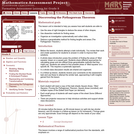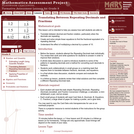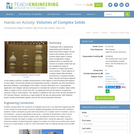
(Nota: Esta es una traducción de un recurso educativo abierto creado por el Departamento de Educación del Estado de Nueva York (NYSED) como parte del proyecto "EngageNY" en 2013. Aunque el recurso real fue traducido por personas, la siguiente descripción se tradujo del inglés original usando Google Translate para ayudar a los usuarios potenciales a decidir si se adapta a sus necesidades y puede contener errores gramaticales o lingüísticos. La descripción original en inglés también se proporciona a continuación.)
En el módulo 3, la comprensión de los estudiantes de la adición y la resta de las fracciones se extiende desde el trabajo anterior con equivalencia de fracción y decimales. Este módulo marca un cambio significativo lejos de la centralidad de los grados elementales de las diez unidades de base al estudio y el uso del conjunto completo de unidades fraccionarias desde el avance de grado 5, especialmente como se aplica al álgebra.
Encuentre el resto de los recursos matemáticos de Engageny en https://archive.org/details/engageny-mathematics.
English Description:
In Module 3, students' understanding of addition and subtraction of fractions extends from earlier work with fraction equivalence and decimals. This module marks a significant shift away from the elementary grades' centrality of base ten units to the study and use of the full set of fractional units from Grade 5 forward, especially as applied to algebra.
Find the rest of the EngageNY Mathematics resources at https://archive.org/details/engageny-mathematics.
- Subject:
- Mathematics
- Ratios and Proportions
- Material Type:
- Module
- Provider:
- New York State Education Department
- Provider Set:
- EngageNY
- Date Added:
- 11/27/2012



